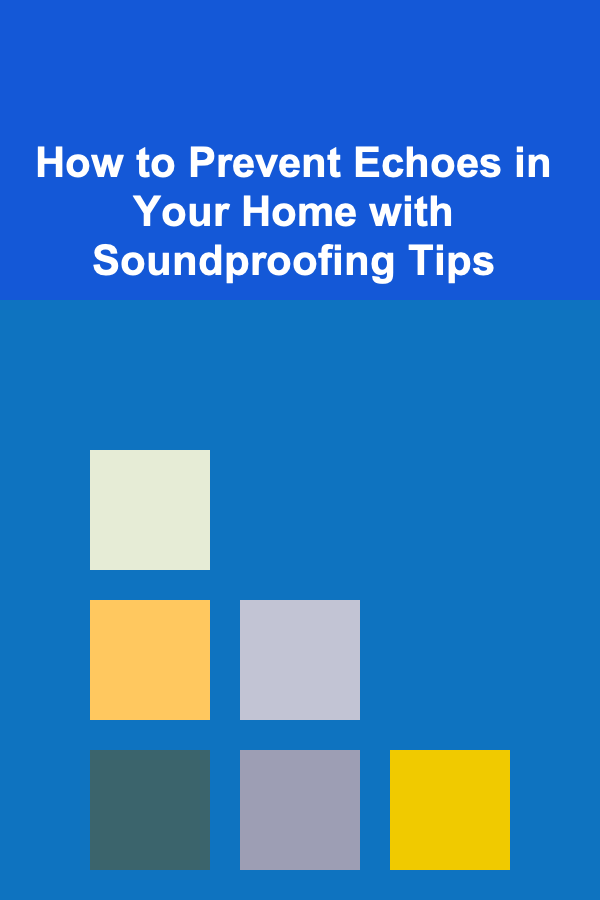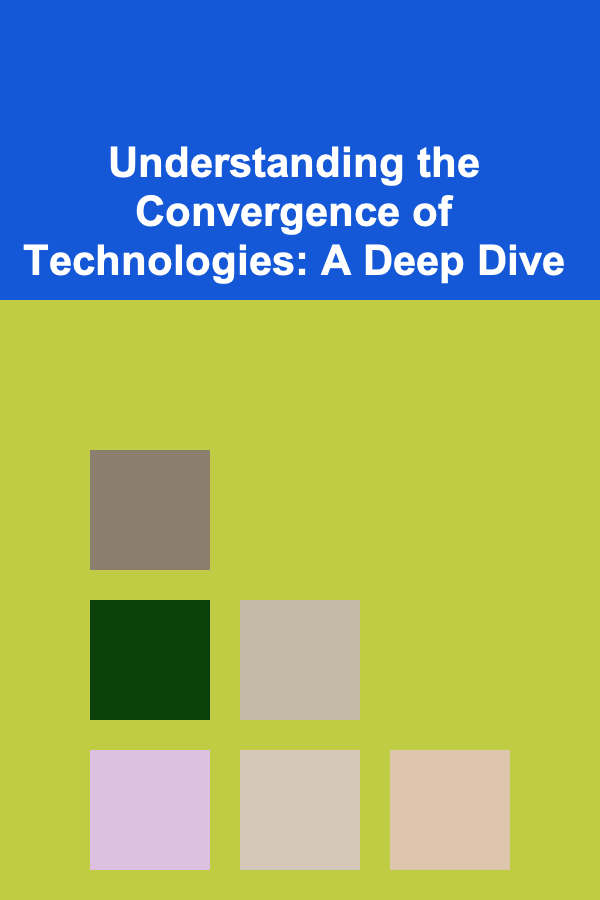Implementing Blockchain for Art Provenance Tracking: A Comprehensive Guide
ebook include PDF & Audio bundle (Micro Guide)
$12.99$9.99
Limited Time Offer! Order within the next:
The art world, renowned for its beauty and cultural significance, has long been plagued by challenges related to authenticity, ownership, and transparency. Forgery, theft, and opaque transaction histories have eroded trust and hindered the growth of the art market. Blockchain technology, with its inherent properties of immutability, transparency, and decentralization, offers a compelling solution to these problems, promising to revolutionize art provenance tracking and bring much-needed integrity to the industry.
Understanding the Problem: The Current State of Art Provenance
Provenance, derived from the French word "provenir" meaning "to come from," refers to the documented history of an artwork's ownership, custody, and location. A well-documented provenance establishes the authenticity and legitimacy of an artwork, significantly impacting its value and desirability. However, establishing a reliable provenance is often a complex and arduous task due to several factors:
- Incomplete or Missing Records: Historical records can be lost, damaged, or simply never created, leaving gaps in the provenance chain.
- Lack of Standardization: Different institutions and individuals maintain provenance information in varying formats, making it difficult to compile a comprehensive history.
- Potential for Fraudulent Alteration: Traditional provenance records are vulnerable to tampering and falsification, making it challenging to verify their accuracy. This includes issues like creating fake sales receipts, altering dates, or even inserting the artwork into a known collection's catalog.
- Limited Accessibility: Provenance information is often fragmented and dispersed across multiple archives, museums, and private collections, making it inaccessible to many stakeholders. Researching provenance can be incredibly time-consuming and expensive.
- High Costs of Verification: Authenticating artwork and verifying provenance requires expertise and resources, often involving expensive forensic analysis and consultation with art historians.
These issues create opportunities for fraud and illicit activities, damaging the reputation of the art market and undermining investor confidence. Furthermore, the lack of transparency hinders the ability of museums and collectors to conduct thorough due diligence, increasing the risk of acquiring stolen or illegally obtained artwork.
Blockchain Technology: A Solution for Art Provenance
Blockchain technology, the underlying infrastructure of cryptocurrencies like Bitcoin and Ethereum, provides a secure and transparent platform for recording and verifying information. Its key features make it ideally suited for addressing the challenges of art provenance tracking:
- Immutability: Once data is recorded on a blockchain, it cannot be altered or deleted, ensuring the integrity of the provenance record. Each transaction, representing a change in ownership or custody, is cryptographically linked to the previous one, creating an unbroken chain of information.
- Transparency: Blockchain data is publicly accessible (depending on the chosen blockchain architecture, as discussed later), allowing stakeholders to verify the provenance of an artwork. This promotes trust and accountability within the art market. However, it's important to note that while transactions are transparent, the identities of the parties involved can be obfuscated through the use of pseudonymous addresses.
- Decentralization: Blockchain networks are distributed across multiple computers, eliminating the risk of a single point of failure or control. This ensures the resilience and longevity of the provenance record. This distribution makes it significantly harder for malicious actors to manipulate or censor the data.
- Security: Blockchain technology employs cryptographic techniques to secure data and prevent unauthorized access or modification. This reduces the risk of fraud and ensures the authenticity of the provenance record. Hashing algorithms are used to create unique fingerprints of each piece of data, ensuring that any alteration, however minor, is immediately detectable.
- Smart Contracts: Self-executing contracts stored on the blockchain can automate various aspects of art transactions, such as payment processing, ownership transfer, and royalty distribution. This streamlines the process and reduces the risk of human error.
By leveraging these features, blockchain can create a secure, transparent, and immutable record of an artwork's history, providing a reliable source of truth for all stakeholders.
Implementing Blockchain for Art Provenance: A Step-by-Step Guide
Implementing a blockchain-based provenance tracking system requires careful planning and execution. Here's a step-by-step guide to help you get started:
Step 1: Define Your Objectives and Scope
Before embarking on a blockchain project, it's crucial to clearly define your objectives and scope. What specific problems are you trying to solve? Which artworks or art segments will be included in the system? Who are the key stakeholders? Answering these questions will help you determine the specific requirements of your blockchain solution.
Consider the following factors when defining your objectives:
- Target Audience: Will the system be used by museums, galleries, collectors, artists, or a combination of these?
- Types of Artworks: Will the system support paintings, sculptures, digital art, or all of the above? The specific requirements for documenting each type of artwork may vary.
- Geographic Scope: Will the system be limited to a specific region or will it be global in scope?
- Data Privacy: How will you protect sensitive information about artists, collectors, and artworks? Consider data privacy regulations like GDPR.
- Integration with Existing Systems: How will the blockchain system integrate with existing databases, CRM systems, and other IT infrastructure?
Step 2: Choose the Right Blockchain Platform
Several blockchain platforms are available, each with its own strengths and weaknesses. The choice of platform will depend on your specific requirements and priorities. Here are some of the most popular options:
- Ethereum: A popular open-source blockchain platform that supports smart contracts. Ethereum is widely used for building decentralized applications (dApps) and is well-suited for complex art provenance applications. However, transaction fees can be high, and the network can be congested during peak periods.
- Hyperledger Fabric: A permissioned blockchain platform designed for enterprise use. Hyperledger Fabric offers greater control over network participants and data access, making it suitable for applications where privacy and security are paramount. It's more complex to set up and requires more technical expertise than Ethereum.
- Tezos: A self-amending blockchain platform that allows for on-chain governance. Tezos is designed to be more resilient to hard forks and offers greater flexibility for upgrades and improvements.
- Flow: A blockchain designed specifically for NFTs and digital collectibles. It offers low transaction fees and scalability, making it a good choice for platforms dealing with a high volume of digital art transactions.
- Private or Consortium Blockchains: These offer even greater control and privacy. A private blockchain is controlled by a single organization, while a consortium blockchain is governed by a group of organizations. These options are suitable for situations where data privacy and regulatory compliance are critical. However, they lack the inherent decentralization of public blockchains.
When choosing a blockchain platform, consider the following factors:
- Scalability: Can the platform handle a large volume of transactions?
- Security: How secure is the platform against attacks and vulnerabilities?
- Transaction Costs: How much does it cost to execute transactions on the platform?
- Development Tools and Resources: Are there sufficient tools and resources available to develop and deploy applications on the platform?
- Regulatory Compliance: Does the platform comply with relevant regulations, such as data privacy laws?
- Governance Model: How are decisions made about the platform's development and future direction?
For most art provenance applications that require a level of public verifiability, a public or permissioned blockchain (like Hyperledger Fabric with controlled access) are the most suitable choices.
Step 3: Design Your Data Model
The data model defines the structure and organization of the information stored on the blockchain. A well-designed data model is essential for ensuring the accuracy, completeness, and consistency of the provenance record.
Consider the following data elements when designing your data model:
- Artwork Information:
- Title
- Artist
- Date of Creation
- Medium
- Dimensions
- Description
- Unique Identifier (e.g., catalogue raisonné number)
- High-resolution image (stored off-chain, with a hash stored on-chain)
- Provenance Events:
- Sale (date, buyer, seller, price, transaction details)
- Exhibition (date, location, exhibition title)
- Publication (title, author, date, page number)
- Appraisal (date, appraiser, value)
- Restoration (date, restorer, description of work)
- Loan (date, lender, borrower, purpose)
- Authentication (date, authenticator, opinion)
- Change of Custody (date, custodian)
- Participants:
- Artists (name, contact information, authentication credentials)
- Collectors (name, contact information)
- Dealers (name, contact information)
- Museums (name, contact information)
- Appraisers (name, contact information, credentials)
- Experts (name, contact information, area of expertise)
- Metadata:
- Timestamp of each transaction
- Digital signatures of participants
- Hashes of off-chain documents and images
It's important to establish clear standards for data entry and validation to ensure data quality. Consider using controlled vocabularies and standard data formats to promote interoperability with other systems. For example, consider using the CIDOC Conceptual Reference Model (CRM) as a basis for your data model, as it's a widely recognized standard in the cultural heritage domain.
Remember to think about how you will handle updates and corrections to the data. While blockchain data is immutable, mechanisms can be implemented to record corrections as new transactions that supersede previous incorrect entries. This maintains the integrity of the chain while acknowledging and correcting errors.
Step 4: Develop Smart Contracts
Smart contracts are self-executing contracts stored on the blockchain that can automate various aspects of art transactions and provenance tracking. They can be used to manage ownership transfer, payment processing, royalty distribution, and other business logic.
Here are some examples of how smart contracts can be used in art provenance:
- Ownership Transfer: A smart contract can automatically transfer ownership of an artwork when payment is received, ensuring a secure and transparent transaction. The contract can verify that the seller is the legitimate owner and that the buyer has sufficient funds.
- Royalty Distribution: A smart contract can automatically distribute royalties to artists whenever their artwork is resold, ensuring that they receive fair compensation for their work. The contract can track the sale price and automatically calculate the royalty amount.
- Authentication: A smart contract can be used to verify the authenticity of an artwork by comparing its digital fingerprint (hash) against a database of known authentic artworks. This can help to prevent the sale of forgeries. This often involves integrating with external oracles (as discussed later) to provide off-chain information to the contract.
- Escrow Services: A smart contract can act as an escrow agent, holding funds until certain conditions are met (e.g., the artwork is delivered and inspected). This protects both the buyer and the seller in a transaction.
- Provenance Updates: Smart contracts can enforce rules about who is authorized to add or modify provenance data, ensuring that only trusted parties can contribute to the artwork's history.
When developing smart contracts, it's crucial to follow secure coding practices to prevent vulnerabilities and ensure the integrity of the contract. Thorough testing and auditing are essential before deploying a smart contract to the blockchain. Consider using formal verification techniques to mathematically prove the correctness of your smart contracts.
Step 5: Build a User Interface
A user-friendly interface is essential for making the blockchain system accessible to all stakeholders. The interface should allow users to easily search for artworks, view provenance records, and participate in transactions.
The user interface should provide the following features:
- Artwork Search: Allow users to search for artworks by title, artist, date, or other criteria.
- Provenance View: Display the complete provenance history of an artwork in a clear and easy-to-understand format. This should include all relevant details about each provenance event, such as dates, participants, and locations.
- Transaction Management: Allow users to initiate and manage transactions, such as ownership transfers and royalty payments.
- User Authentication: Provide secure user authentication and authorization to protect sensitive data. Consider using multi-factor authentication for enhanced security.
- Data Input and Validation: Provide a user-friendly interface for inputting new provenance data, with built-in validation to ensure data quality.
- Reporting and Analytics: Provide tools for generating reports and analyzing provenance data, such as tracking the provenance of artworks by artist or region.
Consider using a responsive design to ensure that the user interface is accessible on a variety of devices, including desktops, tablets, and smartphones.
Step 6: Integrate with Off-Chain Data Sources
While blockchain provides a secure and transparent platform for storing provenance data, it's often necessary to integrate with off-chain data sources to enrich the provenance record. For example, you may want to integrate with art databases, museum catalogs, or authentication services.
However, it's important to ensure the integrity of off-chain data before integrating it into the blockchain system. Consider using trusted third-party data providers and implementing data validation procedures to verify the accuracy and completeness of the data.
One common approach is to store a hash of the off-chain data on the blockchain. This allows you to verify that the data has not been tampered with without storing the entire dataset on the blockchain, which can be expensive and impractical. If the data is changed off-chain, the hash will no longer match, indicating that the data is no longer valid.
Another important aspect is the use of oracles. Oracles are services that provide smart contracts with external data. For example, an oracle could provide a smart contract with the current exchange rate between two currencies, or with the result of an authentication test performed by an art expert. Using reputable and reliable oracles is crucial for ensuring the accuracy and trustworthiness of the data used by smart contracts.
Step 7: Test and Deploy Your System
Before deploying your blockchain system to a production environment, it's crucial to thoroughly test it to identify and fix any bugs or vulnerabilities. Conduct both functional testing (to ensure that the system works as expected) and security testing (to identify and mitigate potential security risks).
Consider using a test network (also known as a testnet) to test your system in a realistic environment without risking real funds. Once you are confident that the system is working correctly, you can deploy it to the main network (mainnet).
Deployment involves setting up the necessary infrastructure, such as servers, databases, and blockchain nodes. You will also need to configure the user interface and integrate it with the blockchain system. Monitor the system closely after deployment to ensure that it is performing as expected and to identify and address any issues that may arise.
Step 8: Educate and Onboard Stakeholders
The success of a blockchain-based art provenance system depends on the participation of all stakeholders, including artists, collectors, dealers, museums, and appraisers. It's crucial to educate these stakeholders about the benefits of blockchain technology and how to use the system effectively.
Provide training and support to help stakeholders understand the system and how it can improve their workflows. Address any concerns they may have about data privacy, security, or usability. Highlight the benefits of increased transparency, trust, and efficiency that blockchain technology can bring to the art market.
Develop clear and concise documentation to guide users through the system's features and functionalities. Consider creating tutorials, videos, and other educational materials to make it easier for stakeholders to learn about the system.
Step 9: Maintain and Evolve Your System
Blockchain technology is constantly evolving, so it's important to maintain and evolve your system to keep it up-to-date with the latest advancements. Regularly update the software, monitor the system for security vulnerabilities, and address any performance issues that may arise.
Gather feedback from stakeholders and use it to improve the system's features and functionalities. Consider adding new features, such as support for new types of artworks or integrations with other systems. Stay informed about new developments in blockchain technology and explore opportunities to leverage these advancements to further enhance your art provenance system.
The key to long-term success is to treat the blockchain system as a living platform that continuously adapts to the evolving needs of the art market.
Challenges and Considerations
While blockchain offers significant potential for improving art provenance tracking, there are several challenges and considerations that need to be addressed:
- Data Accuracy and Integrity: Blockchain ensures the immutability of data, but it cannot guarantee the accuracy of the data that is initially entered into the system. If inaccurate or fraudulent information is recorded on the blockchain, it will remain there permanently. Therefore, it's crucial to implement robust data validation procedures and to ensure that only trusted parties are authorized to add or modify data. This may involve requiring users to provide proof of their identity or credentials before they can access the system.
- Scalability: Some blockchain platforms have limited scalability, which can affect the performance of the system, especially during peak periods. Consider using a blockchain platform that is designed for scalability or exploring alternative solutions, such as layer-2 scaling solutions. Database sharding and other optimization techniques can also improve performance.
- Regulation and Compliance: The legal and regulatory landscape surrounding blockchain technology is still evolving. It's important to stay informed about relevant regulations and to ensure that your system complies with all applicable laws. Consider consulting with legal experts to ensure that your system is compliant with regulations such as GDPR, anti-money laundering (AML) laws, and other relevant regulations.
- Data Privacy: Blockchain data is typically publicly accessible, which can raise concerns about data privacy. Consider using privacy-enhancing technologies, such as zero-knowledge proofs or homomorphic encryption, to protect sensitive information. Alternatively, you can use a permissioned blockchain, which allows you to control who has access to the data. Carefully consider the trade-offs between transparency and privacy when designing your system.
- Interoperability: Different blockchain platforms are often incompatible with each other, which can limit the ability to share provenance data across different systems. Consider using interoperability protocols or standards to facilitate data exchange between different blockchain platforms. This will help to create a more interconnected and collaborative art ecosystem.
- Cost: Developing and deploying a blockchain-based art provenance system can be expensive. Consider the costs of software development, infrastructure setup, and ongoing maintenance. Explore alternative funding models, such as grants, crowdfunding, or partnerships with other organizations. Open-source solutions can also help to reduce costs.
- Complexity: Blockchain technology can be complex and challenging to understand. It's important to provide adequate training and support to stakeholders to help them use the system effectively. Consider using a user-friendly interface and providing clear and concise documentation.
- Acceptance and Adoption: The success of a blockchain-based art provenance system depends on the willingness of stakeholders to adopt the technology. Address any concerns they may have about data privacy, security, or usability. Highlight the benefits of increased transparency, trust, and efficiency that blockchain technology can bring to the art market.
- Energy Consumption: Some blockchain technologies, particularly Proof-of-Work (PoW) blockchains like older versions of Ethereum, consume significant amounts of energy. This is becoming an increasing concern. Consider using more energy-efficient blockchain technologies, such as Proof-of-Stake (PoS) or Delegated Proof-of-Stake (DPoS).
The Future of Art Provenance with Blockchain
Blockchain technology has the potential to transform the art market by creating a more transparent, secure, and efficient ecosystem. In the future, we can expect to see:
- Wider Adoption: As blockchain technology becomes more mature and user-friendly, we can expect to see wider adoption by artists, collectors, dealers, museums, and other stakeholders.
- Increased Transparency: Blockchain will provide greater transparency into the provenance of artworks, making it easier to verify their authenticity and legitimacy.
- Reduced Fraud: The immutability and transparency of blockchain will help to reduce fraud and illicit activities in the art market.
- Improved Efficiency: Smart contracts will automate various aspects of art transactions, streamlining the process and reducing the risk of human error.
- New Business Models: Blockchain will enable new business models, such as fractional ownership of artworks and decentralized art marketplaces.
- Enhanced Artist Rights: Blockchain will help to protect the rights of artists by ensuring that they receive fair compensation for their work.
- Greater Accessibility: Blockchain will make art more accessible to a wider audience by creating new opportunities for investment and participation.
By addressing the challenges and embracing the opportunities presented by blockchain technology, the art market can usher in a new era of trust, transparency, and efficiency. This will benefit all stakeholders, from artists and collectors to museums and the public.
Conclusion
Implementing blockchain for art provenance tracking is a complex undertaking, but the potential rewards are significant. By carefully planning and executing your blockchain project, you can create a secure, transparent, and immutable record of an artwork's history, providing a reliable source of truth for all stakeholders. Embrace the technology, address the challenges, and help usher in a new era of trust and transparency in the art world.

How to Build a DIY Home Obstacle Course for Family Fun
Read More
How to Create a Digital Inventory of Office Supplies
Read More
How to Learn a Language as an Older Adult
Read More
How to Prevent Echoes in Your Home with Soundproofing Tips
Read More
How to Leverage ChatGPT for Conceptual Data Analysis
Read More
Understanding the Convergence of Technologies: A Deep Dive
Read MoreOther Products

How to Build a DIY Home Obstacle Course for Family Fun
Read More
How to Create a Digital Inventory of Office Supplies
Read More
How to Learn a Language as an Older Adult
Read More
How to Prevent Echoes in Your Home with Soundproofing Tips
Read More
How to Leverage ChatGPT for Conceptual Data Analysis
Read More